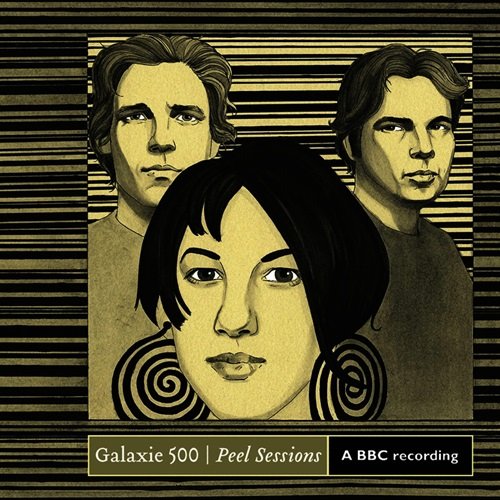Melodic, dreamy, and enigmatic, Galaxie 500 was arguably as influential on indie rock as the Velvet Underground was on the rock and punk that came after it. Active for just five years between 1987 and 1991, the trio recorded three albums of reverb-saturated, woozily slow-paced and minimal songs that would have a lasting effect on the shoegaze and slowcore movements that followed shortly after their split. Galaxie 500's cloud-like falsetto vocals, spare percussion, and post-New Order high-register basslines all gelled into a sound as mysterious as it was subtle on albums like their declarative 1990 master stroke This Is Our Music, and their influence could be heard for decades to come with each new crop of shadowy, heart-achy post-punkers. Galaxie 500 splintered into important acts like Luna, Damon & Naomi, and Magic Hour, and any documentation of their briefly flickering lifespan was poured over by completists and collected on post-breakup releases like 2024's studio outtake collection Uncollected Noise New York ’88-’90.
The group formed in Boston, Massachusetts in 1987 and comprised vocalist/guitarist Dean Wareham (a transplanted New Zealand native), and bassist Naomi Yang and drummer Damon Krukowski, longtime friends who first met in high school in New York City before all three attended Harvard. Wareham and Krukowski initially teamed in the short-lived Speedy & the Castanets, which split after their bass player experienced a religious conversion; upon re-forming, the duo recruited Yang to play bass, although she had no prior musical experience.
Named after a friend's car, Galaxie 500 began performing live throughout Boston and New York before recording a three-song demo tape which they sent to Shimmy Disc honcho Kramer, who agreed to become the trio's producer. After bowing in early 1988 with the singles "Tugboat" and "Oblivious" (the latter track featured on a flexi-disc included in an issue of Chemical Imbalance magazine), they issued their full-length debut, Today, which highlighted the group's distinct, evolving sound pitting Wareham's eerie, plaintive tenor, elliptical songs, and slow-motion guitar textures against Yang's warm, fluid basslines and Krukowski's lean drumming.
After signing to the U.S. branch of Rough Trade, Galaxie 500 issued its defining moment, 1989's evocative On Fire, a remarkably assured and rich record including the superb singles "Blue Thunder" and "When Will You Come Home." After a limited-edition 7" release featuring live renditions of the Beatles' "Rain" and Jonathan Richman's "Don't Let Our Youth Go to Waste," the group returned in 1990 with This Is Our Music, a diffuse collection spotlighting the wry, sunny single "Fourth of July" and a haunting cover of Yoko Ono's "Listen, The Snow Is Falling." Following a subsequent tour, Galaxie 500 disbanded after Wareham phoned Yang and Krukowski to say he was quitting the group.
A few months later, after Wareham formed his new band, Luna, Rough Trade went bankrupt, and with the label's demise went the trio's three albums, as well as their royalties. In 1991, at an auction of Rough Trade's assets, Krukowski purchased the master tapes for the group's music, and five years later the Rykodisc label issued a box set containing Galaxie 500's complete recorded output. A previously unreleased 1990 live set, dubbed Copenhagen, followed in 1997. In the meantime, after first resurfacing under the name Pierre Etoile, Krukowski and Yang later recorded as Damon & Naomi; additionally, the duo served as the rhythm section for the Wayne Rogers-led Magic Hour until that band split in 1996. Wareham continued with Luna until their 2005 demise, after which he worked with former Luna bandmate Britta Phillips under the name Dean & Britta. In 2014, the duo went on tour where they played a set of Galaxie 500 songs.
The band's influence could be heard markedly in the work of new artists as the years went on, and their minute discography became canonized in indie rock circles. They were the subject of a book that told their story as an oral history, and in 2024, a collection of previously unreleased material surfaced with Uncollected Noise New York ’88-’90. The lengthy archival album included all of their sessions put to tape at Noise New York studio, focusing on outtakes and non-album tracks, eight of which had never been shared publicly in any form.




